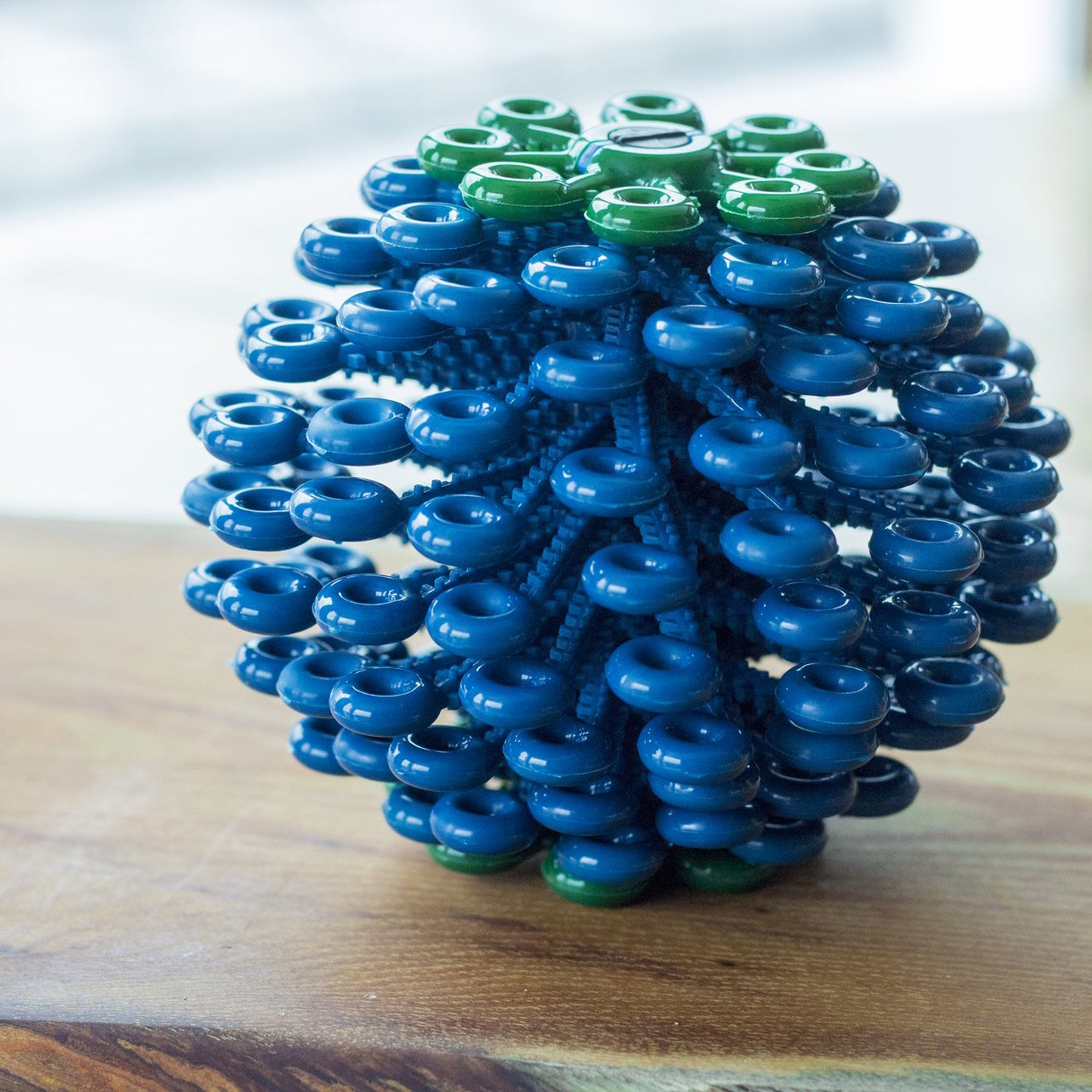Microfiber pollution is a well-established environmental problem. Every time you wash your favorite fleece jacket or synthetic base layer, tiny fibers��dislodge��from the fabric and flow down the drain, ending up in public waterways. A new laundry product called could help.
The grapefruit-size ball, made out of recycled plastic, is designed to be tossed into the washing machine with your clothes. Tiny arms with circular nodules at the ends trap minuscule plastic fibers that float off your clothing, catching them before they drain away with the wash water. When you transfer your clothes to the dryer, take out the Cora Ball, pick out the captured microfibers, and throw them in the trash.
Cora Ball isn’t the only product on the market that aims to reduce microfiber pollution from home laundry, but it is the cheapest and most user-friendly. Other microfiber filters, like Lint and , cost hundreds of dollars and require installation. Cora Ball costs $30 and is ready to use out of the box, no instructions required.
After months of failed prototypes, inspiration for the finished Cora Ball design came from the ocean itself, specifically��coral, according to Rachel Miller, founder of , the environmental research and advocacy nonprofit��that created Cora Ball. “Coral does exactly what we wanted our device to do,” says Miller. “It catches microscopic things from flowing water.” The edges of a Cora Ball’s arms are serrated to��trap fibers, while the round nodules protect clothing from snags.
How much of an impact could these simple units make? The jury is still out. A group of environmental scientists at the University of Toronto, led by , a professor of ecology and evolutionary biology, ran a study (recently submitted to the , likely to be published in the next several months) testing the Cora Ball against the Lint Luv-R by using each device with brand-new fleece blankets. Rochman found the Lint Luv-R captured roughly 87 percent of the shed microfibers, while the Cora Ball captured 25 percent.
But even those numbers are difficult to put into context, because scientists don’t know exactly how much of the total microfiber pollution originates from home laundry. “We know that laundering is definitely a source of microfiber,” says Miriam Diamond, a professor of earth science at the University of Toronto, “but we don’t know the contribution of laundering versus other sources.” Factories and manufacturing facilities are likely culprits, and Miller and other researchers are also finding evidence that a��significant proportion of stray microfibers may not come from wastewater at all: microfibers have been found in��rivers miles upstream from the nearest city, town, or water-treatment facility.
Still, it seems that in this case��something is better than nothing. And��the Cora Ball could wind up having a greater effect than its more effective and expensive counterparts, simply because, with its low barrier to entry, more people might buy and use it.��
“The Cora Ball alone isn’t going to completely solve the problem,” says Sherri A. Mason, chair of the department of geology and environmental sciences at the State University of New York at Fredonia. “But if we can manufacture synthetics to shed less, require washing machines to have filters like our dryers do, and use products like the Cora Ball, I think we can make great strides to dramatically reducing the prominence of this type of pollution.”
Miller is well aware that Cora Ball is only the first of many steps toward making a sizable dent in microfiber pollution. In fact, Cora Ball is as much about encouraging��innovation at other points along the responsibility chain as it is about��curbing the problem.��“Weavers, clothing designers, the people who design septic systems—they all��have the opportunity to make better textiles, design apparel that sheds less, construct septic systems that filter out microfibers,” Miller says. She wants Cora Ball to shine��a light on how much more there is to be done.
Cora Ball launched on Kickstarter in 2017��and is now on sale on the company’s site.��


